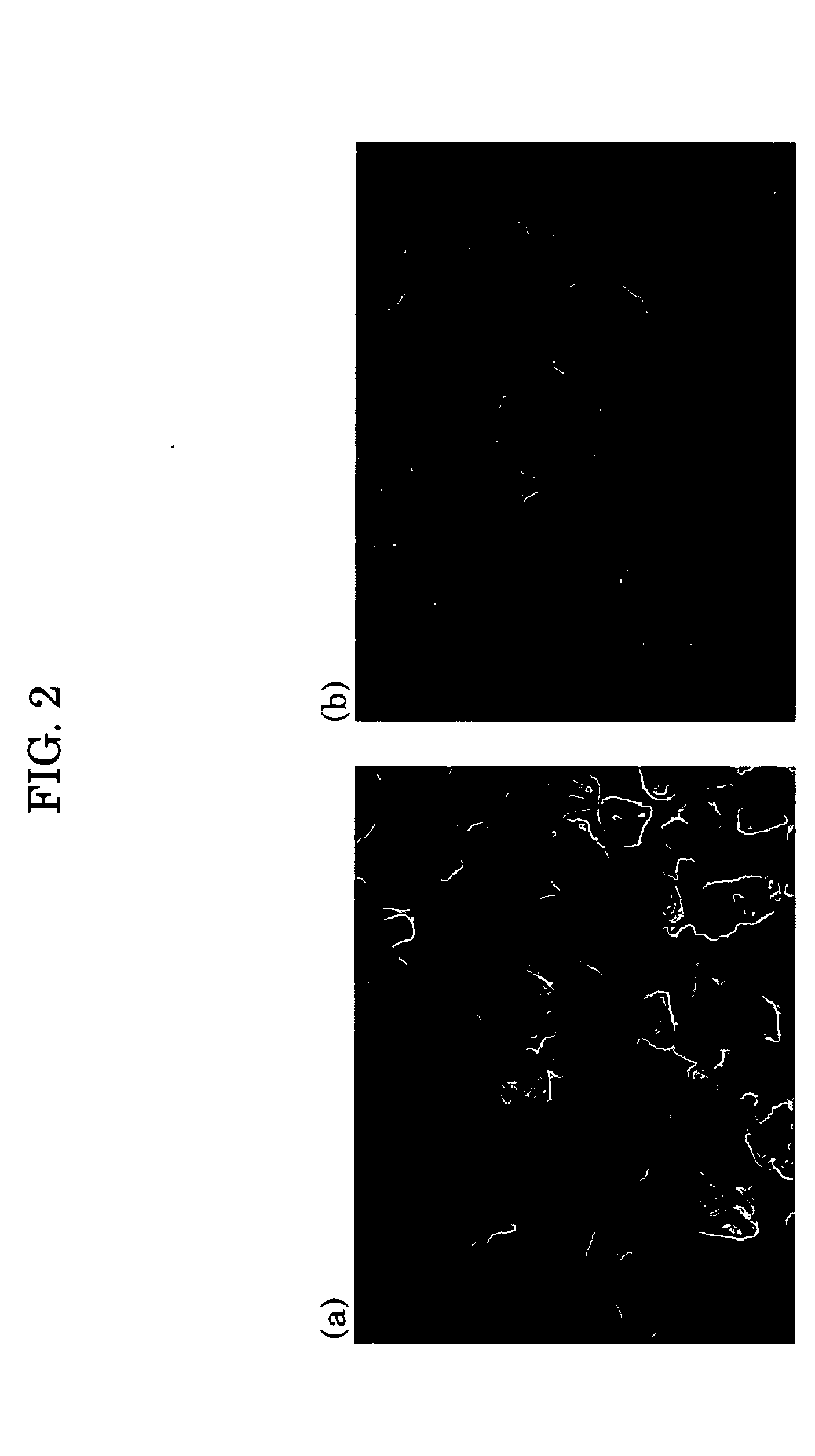Spherical light storing phosphor powder and process for producing the same
a phosphor powder and spherical light technology, applied in the direction of chemistry apparatus and processes, light-emitting compositions, etc., can solve the problems of poor durability, poor chemical stability, and rapid reduction of emission capability, and achieve excellent durability and high emission intensity.
- Summary
- Abstract
- Description
- Claims
- Application Information
AI Technical Summary
Benefits of technology
Problems solved by technology
Method used
Image
Examples
example 1
[0039]
SrCl2.6H2O 269 gAlCl3.6H2O683.2 g TiCl31.01 gH3BO330.0 g
[0040] The above are dissolved in 3000 ml of ion-exchange water, thereby preparing an aqueous solution which is designated as a solution A.
[0041] Then, the below are dissolved in hydrochloric acid, thereby preparing a solution B.
Eu2O32.0 gDy2O32.0 g
[0042] The solution B was heated to evaporate excessive hydrochloric acid and thus remove the same. Then, the solution B was fed into the solution B and these were agitated. Thus, a solution C was prepared.
[0043] 540 g of (NH4)2CO3 was dissolved in 2000 ml of ion-exchange water. Thus, a solution D was prepared. The solution D was heated to 80° C. and vigorously agitated while adding the solution C thereto and kept them at 80° C. for 1 hour. They were once agitated and allowed to stand to cool. Precipitate produced was filtered out, dried with heat and then ground. Thus, a precursor material was prepared. This precursor material was fed through the raw-material feeding port ...
example 2
[0045] As a raw material, a light-storing fluorescent fine powder that was produced by previously synthesizing a light-storing fluorescent solid and grinding the same. Specifically, the following powders were mixed:
Al2O33300gSrCO35000gEu2O3120gDy2O3150gSiO20.05gNiCO30.009gH3BO4600g
[0046] They were mixed together evenly for 3 hours by a ball mill at room temperature and then temporarily fired at 1200° C. The thus produced temporarily fired substance was ground into fine particles, and these were used as a raw material for plasma spraying. The plasma spraying was performed with Ar gas (pressure: 5.17×105 Pa, flow rate: 1.0 L / s), H2 gas (pressure: 3.45×105 Pa, flow rate: 0.25 L / s), current of 600 A, and voltage of 60 V.
[0047]FIG. 2 is a photograph taken by an electron microscope, illustrating a light-storing fluorescent spherical powder of the Example 2 and a light-storing fluorescent powder produced by a conventional process as a comparative example.
[0048] As is apparent from FIG....
PUM
| Property | Measurement | Unit |
|---|---|---|
| temperature | aaaaa | aaaaa |
| temperature | aaaaa | aaaaa |
| pressure | aaaaa | aaaaa |
Abstract
Description
Claims
Application Information
 Login to View More
Login to View More - R&D
- Intellectual Property
- Life Sciences
- Materials
- Tech Scout
- Unparalleled Data Quality
- Higher Quality Content
- 60% Fewer Hallucinations
Browse by: Latest US Patents, China's latest patents, Technical Efficacy Thesaurus, Application Domain, Technology Topic, Popular Technical Reports.
© 2025 PatSnap. All rights reserved.Legal|Privacy policy|Modern Slavery Act Transparency Statement|Sitemap|About US| Contact US: help@patsnap.com


